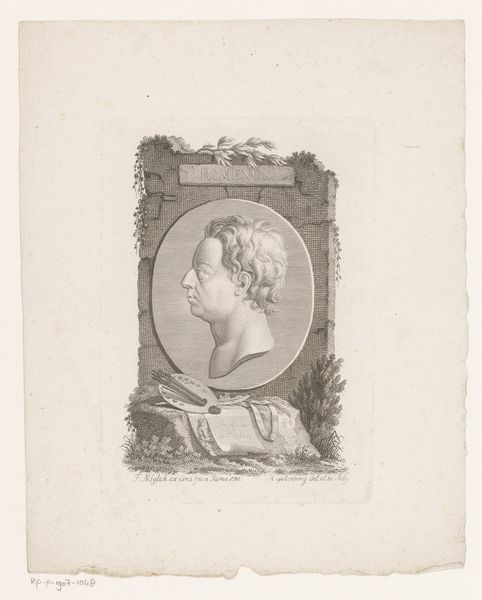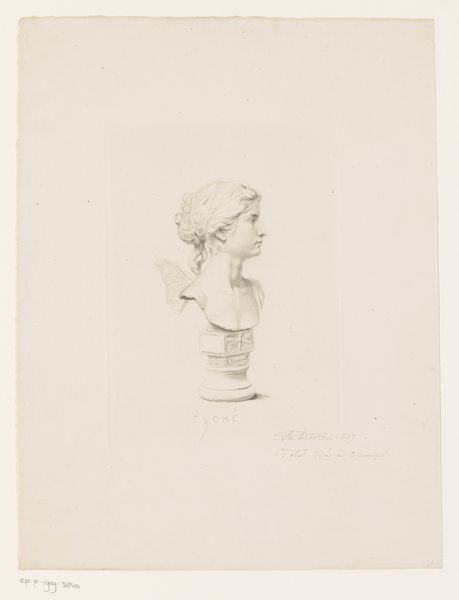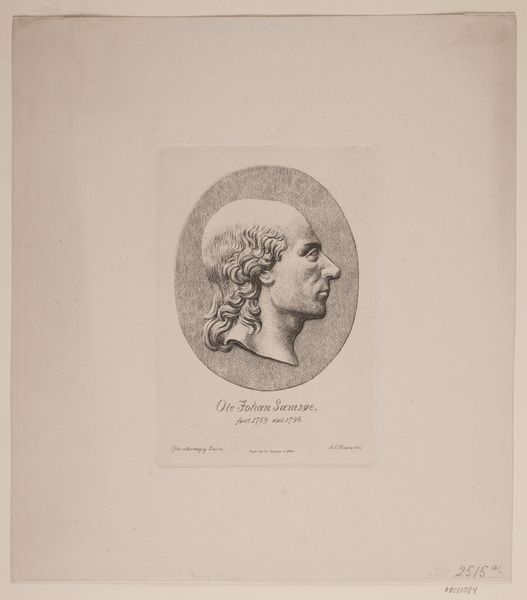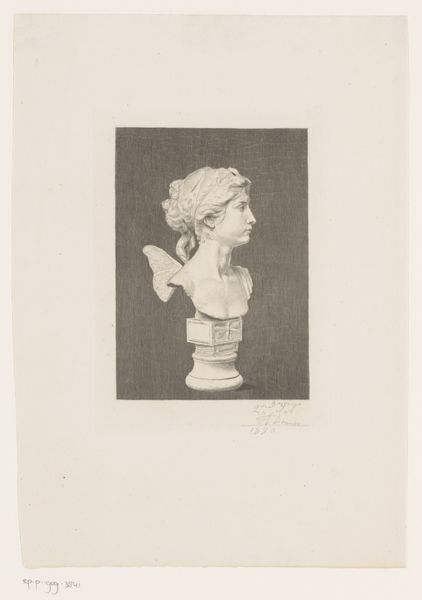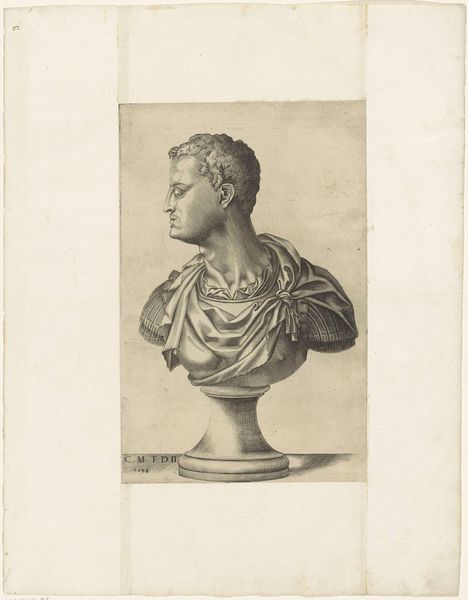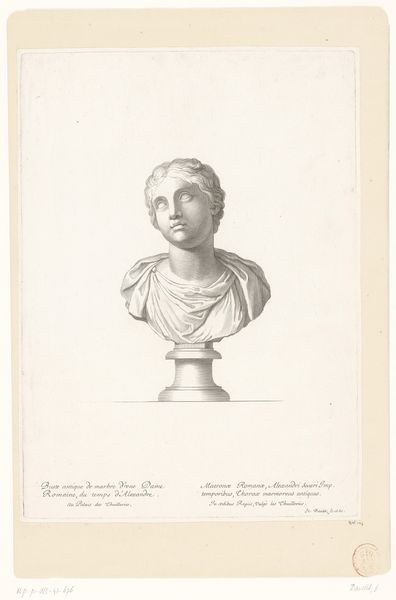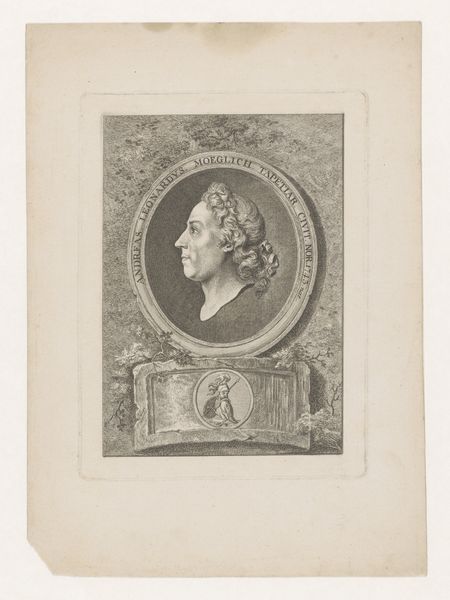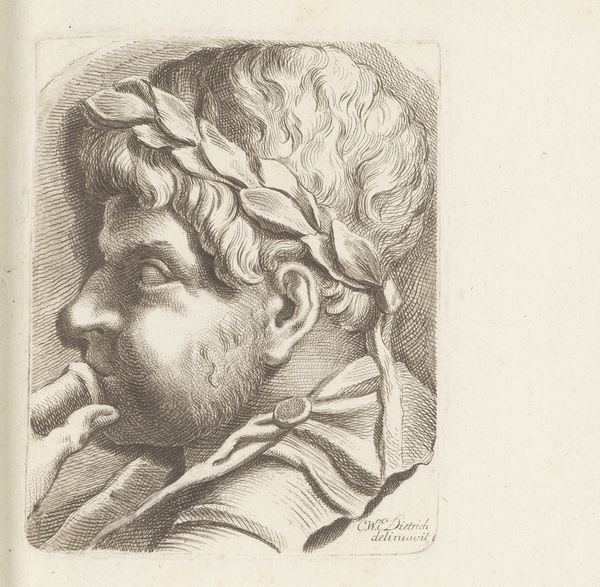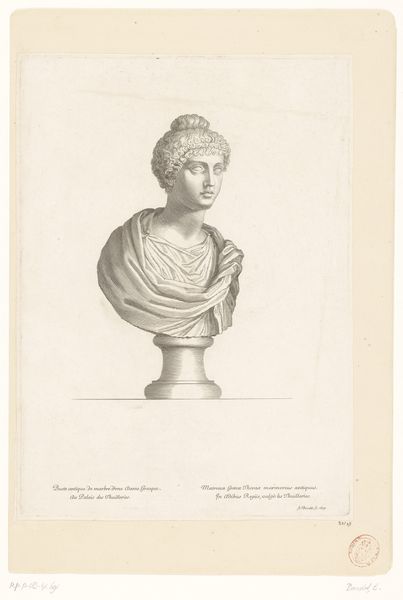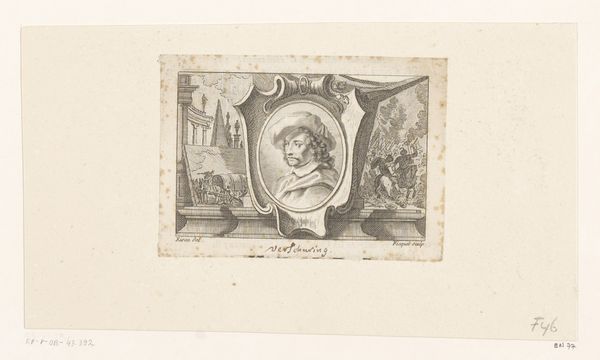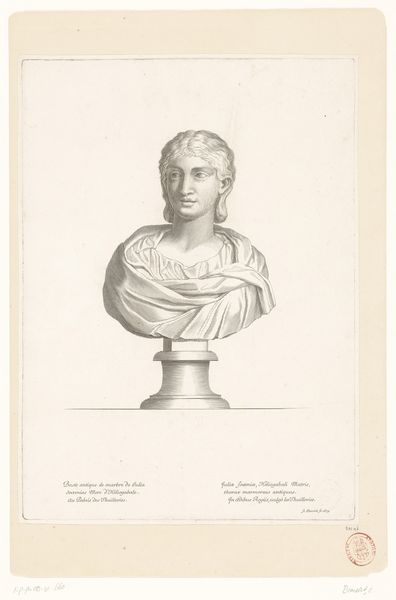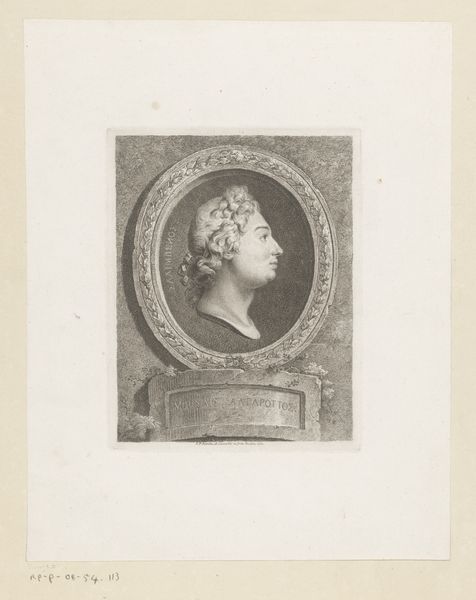
print, engraving
#
portrait
#
baroque
# print
#
old engraving style
#
classicism
#
ancient-mediterranean
#
history-painting
#
engraving
Dimensions: height 142 mm, width 103 mm
Copyright: Rijks Museum: Open Domain
Curator: Looking at this 18th-century print titled "Portret van Ptolemaeus XII Neos Dionysos", I find myself considering how it embodies a particular kind of historical narrative through portraiture. Editor: Immediately, I feel a sense of serenity, an almost statuesque calm radiating from the figure. The details feel meticulously etched; it's as if every line is whispering a story. Curator: Absolutely. Engravings, like this one, played a vital role in disseminating images of power and knowledge across Europe. Consider the classical references – the laurel wreath, the idealized profile. They’re carefully constructing a visual argument about Ptolemy's legitimacy and connection to a grand, ancient heritage. Editor: Heritage is so fascinating, isn't it? It feels so constructed, doesn’t it? I mean, look at the stark contrast between the smoothness of his face and the incredible details etched into the laurel wreath. It's trying so hard, you know? Curator: That tension, I think, reveals a crucial aspect of these portraits. While appearing to be objective records, they are heavily mediated representations laden with the political and social agendas of their time. The act of creating and circulating the image, especially within elite circles, reinforces specific power dynamics. Note, too, how his “Egyptian-ness” is virtually erased, replaced by generalized markers of “classical” authority. Editor: It is amazing how effectively power can use art to revise narratives. He's almost too perfect, which somehow makes me question everything. This image is less about Ptolemy as an individual, more about crafting an idea of kingship. And who benefits from this sanitised narrative? Curator: Exactly! The very act of depicting him in this way tells us more about the 18th century's fascination with antiquity and their own aspirations to emulate classical grandeur. It raises complex questions about cultural appropriation, representation, and the ongoing legacies of colonialism. Editor: Yes, totally. Thanks for reminding me to be wary of the seductiveness of portraiture. Looking closer, it inspires reflection not on Ptolemy but on the persistent impulse to reshape history to fit a specific mold, doesn't it? It kind of makes you think...
Comments
No comments
Be the first to comment and join the conversation on the ultimate creative platform.
